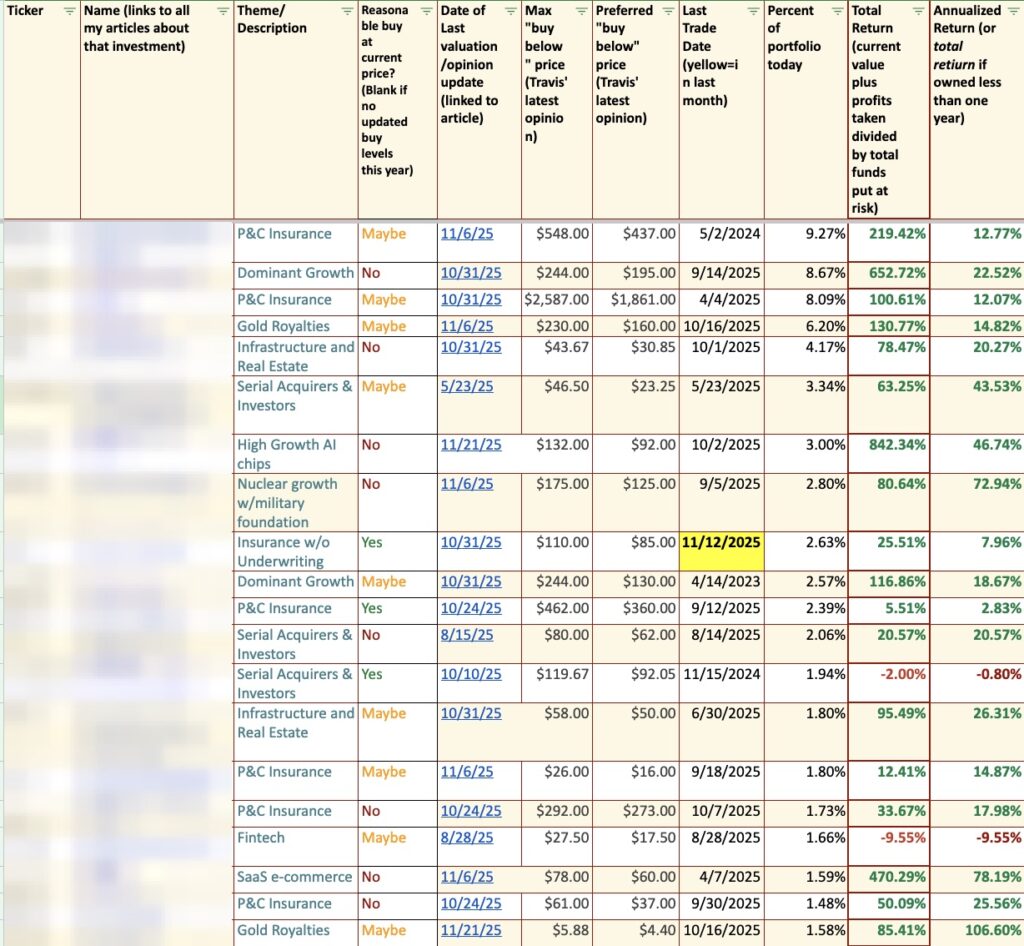Good Saturday afternoon to all of you here on r/stocks! I hope everyone on this sub made out pretty nicely in the market this past week, and are ready for the new trading week, month and quarter ahead. 🙂
Here is everything you need to know to get you ready for the trading week beginning October 3rd, 2022.
Stocks fell in choppy trading Friday as Wall Street closed out a terrible week, month and quarter that brought the S&P 500 to a new 2022 low.
The Dow Jones Industrial Average closed below 29,000 for the first time since November 2020. The index fell 500.10 points, or 1.71%, to 28,725.51. The Nasdaq Composite was 1.51% lower, ending the day at 10,575.62.
Meanwhile, the S&P 500 was down 1.51% on Friday, falling to 3,585.62. The index closed out its worst month since March 2020.
Friday marked the last day of the month and the third quarter. For September, the Dow tumbled 8.8%, while the S&P 500 fell 9.3%. The Nasdaq lost 10.5%.
“It’s been a tough, tough environment for equities and fixed income both, something that we had expected given our views around the Fed keeping interest rates higher for longer and markets are starting to come around to that view,” said Zachary Hill, head of portfolio management at Horizon Investments.
“In the near term, we are likely to have continued market volatility with a downward bias as we head into earnings season,” Hill said.
An inflation report closely watched by the Federal Reserve released Friday showed that prices continued to increase at a rapid pace.
Fed Vice Chair Lael Brainard on Friday underscored the need to bring down inflation, saying the central bank is “committed to avoiding pulling back prematurely” on restrictive monetary policy.
Nike fell sharply after reporting that sales increased, but supply chain and inventory issues hampered the bottom line in its fiscal first quarter. The stock closed down 12.8%.
Quarter to date, the S&P 500 and Nasdaq wrapped up their first three-quarter losing streak since 2009, losing 5.3% and 4.1%, respectively. The Dow dropped 6.7% in the third quarter and saw a third-straight losing quarter for the first time since 2015.
For the week, the major averages posted sharp losses. The S&P 500 slid 2.9% for the week. The Dow tumbled 2.9%, and the Nasdaq fell 2.7%.
This past week saw the following moves in the S&P:
S&P Sectors for this past week:
Major Indices for this past week:
Major Futures Markets as of Friday’s close:
Economic Calendar for the Week Ahead:
Percentage Changes for the Major Indices, WTD, MTD, QTD, YTD as of Friday’s close:
S&P Sectors for the Past Week:
Major Indices Pullback/Correction Levels as of Friday’s close:
Major Indices Rally Levels as of Friday’s close:
Most Anticipated Earnings Releases for this week:
Here are the upcoming IPO’s for this week:
Friday’s Stock Analyst Upgrades & Downgrades:
October First Trading Day Volatile Past 25 Years
We coined the term “bear-killer” for October way back in 1968 in the 1969 Stock Trader’s Almanac, the second edition. The original theory from the 1969 Almanac still holds water.
Based upon data in the soon to be available 2023 Stock Trader’s Almanacon page 90, the big gain on 10/1/2021 pushed the first trading day of October into 7th place for DJIA of all monthly first trading days since September 1997 based upon total DJIA points gained.
S&P 500 has been up 14 of the last 25 years on the first trading day of October. DJIA’s record is slightly softer with 12 declines and NASDAQ’s performance has been the worst of the group, down 13 times with an average loss of 0.25%.
October has been a midterm bear killer
October can evoke fear on Wall Street as memories are stirred of crashes in 1929, 1987, the 554-point DJIA drop on October 27, 1997, back-to-back massacres in 1978 and 1979, Friday the 13th in 1989 and the 733-point DJIA drop on October 15, 2008. During the week ending October 10, 2008, DJIA lost 1,874.19 points (18.2%), the worst weekly decline, in percentage terms, in our database going back to 1901. March 2020 now holds the dubious honor of producing the largest and third largest DJIA weekly point declines. The term “Octoberphobia” has been used to describe the phenomenon of major market drops occurring during the month. Market calamities can become a self-fulfilling prophecy, so stay on the lookout and don’t get whipsawed if it happens.
October has been a turnaround month—a “bear killer” if you will. Twelve post-WWII bear markets have ended in October: 1946, 1957, 1960, 1962, 1966, 1974, 1987, 1990, 1998, 2001, 2002 and 2011 (S&P 500 declined 19.4%). Seven of these years were midterm bottoms.
Midterm-election-year Octobers are downright stellar thanks to the major turnarounds mentioned above; ranking number one on the DJIA, S&P 500 and Russell 1000. Midterm October is NASDAQ’s second-best month and Russell 2000’s third best. This is usually where the “Sweet Spot” of the four-year-presidential-election-cycle begins. The fourth quarter of the midterm years combines with the first and second quarters of the pre-election years for the best three consecutive quarter span for the market, averaging 19.3% for the DJIA and 20.0% for the S&P 500 (since 1949), and an amazing 29.3% for NASDAQ (since 1971).
10 Answers to Questions About the Bear Market
2022 has been historically difficult for investors so far, and it’s likely you have questions. We’re here to answer some of the most common questions we’re hearing nowadays.
Feel free to talk with your advisor about any of these topics – or if you have other questions not addressed here.
1) Just how bad has this year been?
There’s no way to sugar coat things – 2022 has been a rough year. Bonds historically have done well when stocks don’t, but this year that isn’t happening. In fact, the five previous times the S&P 500 lost 10% or more for the year, bonds (as measured by the Bloomberg U.S. Aggregate Bond Index) gained every time, up 7.7% on average.
With the S&P 500 price index down 22.5% for the year and bonds down 13.8%, only 2008 was a worse year for a 60/40 portfolio (with 60% in stocks and 40% in bonds).
2) My bonds are down a lot. How bad has it been?
Yields have soared this year on higher inflation expectations and a hawkish Federal Reserve. As a result, bonds have been performing poorly.. Yields and bond prices historically trade inversely.
The Bloomberg U.S. Aggregate Bond Index is currently down nearly 14% for the year, far and away the worst year historically (since 1976). To put things in perspective, it had never been down two years in a row (which will likely happen this year) and the previous worst year was a 2.9% drop in 1994.
3) Why shouldn’t I just sell everything right now?
Stocks historically haven’t done very well the first few quarters of a midterm year, but they do quite well once the midterm election is over. In fact, since World War II, the S&P 500 has been higher a year after the midterm election every single time, up 14.1% on average. Much better times could be coming – and soon.
One final reason to remain optimistic and not sell now is that data shows stocks have historically tended to perform well after a midterm year low. Since 1950, the S&P 500 has gained more than 32% on average off the lows and has never been lower a year later. The June lows are not far away from current levels. Should new lows be made, it could be another positive for investors going out a year or more.
4) Should we have seen this trouble coming?
Although the size of the drop in stocks and bonds is surprising, to see some weakness this year wasn’t overly surprising. Some of the worst quarters of the four-year cycle took place during this year. The second year (so this year) under a new President tends to be quite weak as well. The good news is how well stocks historically do the following year under a new President.
5) What should we do now that stocks are in a bear market?
There’s an old saying that the stock market is the only place where when things go on sale, everyone runs out of the store screaming. Things are no doubt on sale and investors with a long enough investment horizon may want to look at this weakness as a potential opportunity.
We continue to think the economy isn’t in a recession (more on this below), so that likely means stocks won’t fall significantly from here. Historically, the bear markets that took place without a recession showed stocks falling about 24% on average. In fact, only once did stocks fall more than 30% without a recession and that was the 1987 crash. More near-term pain is always possible, but a major low could be quite near.
6) What could happen once the bear market is over?
No one knows when this current bear will end (we do think it will be fairly soon), but you should be open to significant gains coming off the bear lows.
7) Is the Fed going to break something? Or when will they stop hiking?
The Fed has made it very clear that they would be okay with some pain (think a mild recession) to put a lid on inflation. There is no easy answer here, but Chairman Powell knows history and knows that the Fed didn’t increase rates enough or keep them high for long enough in the 1970s, which led to massive inflation in the late ‘70s and early ‘80s. The truth is the Fed might break something and that might be part of their plan.
Looking back at the previous eight rate hike cycles shows that the Fed hikes until rates get above the headline CPI number. With inflation still running at 8.3% and rates at 3.25%, more hikes could be in the cards. And the Fed’s latest projections suggest we’ll see at least another 125–150 basis points of rate hikes.
8) Will inflation ever come back down?
The recent CPI number was disappointing, showing prices for many goods and services at the consumer level were increasing more than expected. The good news is various other inflation measures are coming back, and quickly, in many cases. For starters, energy prices have fallen and in many cases are lower than before the war started – a good sign. Meanwhile, supply chains are improving, as this survey by the NY Fed shows.
One of the main reasons we are optimistic that inflation could be about to come down quickly is used car prices are rapidly dropping. The recent Manheim Used Car Value Index fell 4% last month, which is one of the largest drops ever. Used cars make up a large part of inflation readings and this should provide a nice tailwind going forward.
9) Aren’t we in a recession right now?
The odds of a recession in 2023 have unquestionably gone up, as the Fed continues to hike rates. But currently, we do not see the economy in a recession. The main reason is the employment backdrop is so strong. More than 3.5 million jobs have been created this year, one of the most ever and not at all recessionary. Additionally, industrial production has been very strong, another important component to the economy. Even consumer spending has remained stubbornly strong amid all the concerns.
Now, there are obvious worries as consumer confidence has been very low (but has been improving with gas prices falling) while manufacturing has slowed, and housing data is tanking due to higher mortgage rates. Currently, we think this is more of a midcycle slowdown versus the start of a recession.
10) What could happen after the midterm elections?
One thing we try to stress on the Carson Investment Research team is not to mix your politics with investing. Many investors didn’t like President Obama and missed out of significant gains, while others didn’t like President Trump and missed out on gains.
Turning to the midterms, we know the party that lost the prior Presidential election is the motivated party and they tend to gain four seats in the Senate and nearly 30 seats in the House. Should this pattern hold again, and the Republicans take both chambers of Congress, this is the very best scenario for stocks. A Democratic President and Republican-controlled Congress has seen the S&P 500 gain more than 16%, on average, during the calendar year. In fact, we saw this in the late 1990s under President Clinton.
What if the Democrats keep control of the Senate? This is about a coin flip by the odds makers and the good news is a Democratic President with a split Congress is also a bullish scenario.
Optimism No Where to Be Found
Although the S&P 500 hit 52-week lows for the first time since June this week, bulls actually stepped back up to the plate (in a very small way). Bullish sentiment, according to the AAII sentiment survey, rose back up to 20% after a low of 17.7% last week. Even with that modest increase, bullish sentiment remains historically muted at 17.7 percentage points below the historical norm.
Bearish sentiment likewise remains elevated and hardly improved. The latest reading dropped marginally from 60.9% to 60.8% marking the first time on record that there have been back-to-back readings of 60% or more as we noted in an earlier tweet. The only other times bearish sentiment came in above 60% were in March 2009, October 2008, and August and October 1990.
Given the near record high in bearish sentiment coupled with the slight increase in bullish sentiment, the bull-bear spread improved rising from -43.2 to -40.8. Again, in spite of that improvement, the latest reading shows that bears continue to heavily outweigh bulls to a historic degree.
Given both bulls and bears are at extremes, recent moves have borrowed heavily from neutral sentiment. That reading has fallen sharply over the past three weeks and is back below 20% for the lowest reading since April 2020. The 9.5 percentage point decline over the past three weeks has been the largest drop in such a span since May pointing to investors being increasingly polarized.
The AAII survey may have moved slightly less bearish this week on net, but other sentiment surveys saw the opposite results. The Investors Intelligence survey saw bulls hit the lowest level since 2016, and the NAAIM exposure index showed the least long exposure to equities since March 2020. Standardizing and then combining each of these surveys shows that the average reading is now two full standard deviations below the historical norm. That is slightly better than the June low with the only other period with as depressed a level of sentiment being the financial crisis years.
Here are the most notable companies reporting earnings in this upcoming trading week ahead-
(CLICK HERE FOR MONDAY’S PRE-MARKET NOTABLE EARNINGS RELEASES!)
(N/A.)
Below are some of the notable companies coming out with earnings releases this upcoming trading week ahead which includes the date/time of release & consensus estimates courtesy of Earnings Whispers:
Monday 10.3.22 Before Market Open:
Monday 10.3.22 After Market Close:
(CLICK HERE FOR MONDAY’S AFTER-MARKET EARNINGS TIME & ESTIMATES!)
(NONE.)
Tuesday 10.4.22 Before Market Open:
Tuesday 10.4.22 After Market Close:
Wednesday 10.5.22 Before Market Open:
Wednesday 10.5.22 After Market Close:
Thursday 10.6.22 Before Market Open:
Thursday 10.6.22 After Market Close:
Friday 10.7.22 Before Market Open:
Friday 10.7.22 After Market Close:
(CLICK HERE FOR FRIDAY’S AFTER-MARKET EARNINGS TIME & ESTIMATES!)
(NONE.)
Matrix Service Company $4.14
Matrix Service Company (MTRX) is confirmed to report earnings at approximately 4:05 PM ET on Friday, October 7, 2022. The consensus estimate is for a loss of $0.42 per share on revenue of $181.84 million. Investor sentiment going into the company’s earnings release has 45% expecting an earnings beat. Consensus estimates are for earnings to decline year-over-year by 5.00% with revenue increasing by 3.97%. Short interest has decreased by 76.8% since the company’s last earnings release while the stock has drifted lower by 35.3% from its open following the earnings release to be 38.5% below its 200 day moving average of $6.73. Overall earnings estimates have been revised lower since the company’s last earnings release. The stock has averaged a 8.1% move on earnings in recent quarters.
Acuity Brands, Inc. $157.47
Acuity Brands, Inc. (AYI) is confirmed to report earnings at approximately 6:00 AM ET on Tuesday, October 4, 2022. The consensus earnings estimate is $3.58 per share on revenue of $1.08 billion and the Earnings Whisper ® number is $3.70 per share. Investor sentiment going into the company’s earnings release has 34% expecting an earnings beat. Consensus estimates are for year-over-year earnings growth of 12.23% with revenue increasing by 8.79%. Short interest has increased by 55.3% since the company’s last earnings release while the stock has drifted lower by 2.6% from its open following the earnings release to be 11.5% below its 200 day moving average of $177.99. Overall earnings estimates have been revised higher since the company’s last earnings release. On Tuesday, September 13, 2022 there was some notable buying of 1,405 contracts of the $210.00 call expiring on Friday, November 18, 2022. Option traders are pricing in a 6.7% move on earnings and the stock has averaged a 6.8% move in recent quarters.
Levi Strauss & Co. $14.47
Levi Strauss & Co. (LEVI) is confirmed to report earnings at approximately 4:10 PM ET on Thursday, October 6, 2022. The consensus earnings estimate is $0.37 per share on revenue of $1.59 billion and the Earnings Whisper ® number is $0.39 per share. Investor sentiment going into the company’s earnings release has 53% expecting an earnings beat. Consensus estimates are for earnings to decline year-over-year by 22.92% with revenue increasing by 6.17%. Short interest has increased by 44.8% since the company’s last earnings release while the stock has drifted lower by 16.4% from its open following the earnings release to be 25.4% below its 200 day moving average of $19.39. Overall earnings estimates have been revised lower since the company’s last earnings release. On Monday, September 26, 2022 there was some notable buying of 1,622 contracts of the $17.00 call expiring on Friday, October 21, 2022. Option traders are pricing in a 10.9% move on earnings and the stock has averaged a 3.8% move in recent quarters.
Constellation Brands, Inc. $229.68
Constellation Brands, Inc. (STZ) is confirmed to report earnings at approximately 7:00 AM ET on Thursday, October 6, 2022. The consensus earnings estimate is $2.83 per share on revenue of $2.49 billion and the Earnings Whisper ® number is $2.89 per share. Investor sentiment going into the company’s earnings release has 21% expecting an earnings beat. Consensus estimates are for year-over-year earnings growth of 18.91% with revenue decreasing by 2.92%. Short interest has decreased by 42.9% since the company’s last earnings release while the stock has drifted lower by 3.5% from its open following the earnings release to be 3.7% below its 200 day moving average of $238.54. Overall earnings estimates have been revised higher since the company’s last earnings release. On Tuesday, September 13, 2022 there was some notable buying of 1,075 contracts of the $340.00 call expiring on Friday, October 21, 2022. Option traders are pricing in a 7.1% move on earnings and the stock has averaged a 3.1% move in recent quarters.
McCormick & Company, Incorporated $71.27
McCormick & Company, Incorporated (MKC) is confirmed to report earnings at approximately 6:30 AM ET on Thursday, October 6, 2022. The consensus earnings estimate is $0.65 per share on revenue of $1.59 billion and the Earnings Whisper ® number is $0.64 per share. Investor sentiment going into the company’s earnings release has 44% expecting an earnings beat. Consensus estimates are for earnings to decline year-over-year by 18.75% with revenue increasing by 2.62%. Short interest has decreased by 3.4% since the company’s last earnings release while the stock has drifted lower by 16.6% from its open following the earnings release to be 22.3% below its 200 day moving average of $91.71. Overall earnings estimates have been revised lower since the company’s last earnings release. On Friday, September 30, 2022 there was some notable buying of 1,051 contracts of the $70.00 put and 1,031 contracts of the $70.00 call expiring on Friday, November 18, 2022. Option traders are pricing in a 8.8% move on earnings and the stock has averaged a 2.1% move in recent quarters.
RPM International Inc. $83.31
RPM International Inc. (RPM) is confirmed to report earnings at approximately 6:45 AM ET on Wednesday, October 5, 2022. The consensus earnings estimate is $1.33 per share on revenue of $1.88 billion and the Earnings Whisper ® number is $1.34 per share. Investor sentiment going into the company’s earnings release has 29% expecting an earnings beat. Consensus estimates are for year-over-year earnings growth of 23.15% with revenue increasing by 13.91%. Short interest has increased by 0.4% since the company’s last earnings release while the stock has drifted lower by 2.3% from its open following the earnings release to be 4.2% below its 200 day moving average of $86.98. Overall earnings estimates have been revised higher since the company’s last earnings release. On Thursday, September 15, 2022 there was some notable buying of 601 contracts of the $100.00 call expiring on Friday, October 21, 2022. Option traders are pricing in a 8.0% move on earnings and the stock has averaged a 2.3% move in recent quarters.
Byrna Technologies Inc. $4.70
Byrna Technologies Inc. (BYRN) is confirmed to report earnings at approximately 8:00 AM ET on Wednesday, October 5, 2022. The consensus estimate is for a loss of $0.04 per share on revenue of $13.88 million. Investor sentiment going into the company’s earnings release has 39% expecting an earnings beat. Consensus estimates are for year-over-year earnings growth of 50.00% with revenue increasing by 59.49%. Short interest has decreased by 50.3% since the company’s last earnings release while the stock has drifted lower by 46.3% from its open following the earnings release to be 46.7% below its 200 day moving average of $8.81. Overall earnings estimates have been revised lower since the company’s last earnings release. The stock has averaged a 7.2% move on earnings in recent quarters.
Helen of Troy Ltd. $96.44
Helen of Troy Ltd. (HELE) is confirmed to report earnings at approximately 6:45 AM ET on Wednesday, October 5, 2022. The consensus earnings estimate is $1.82 per share on revenue of $521.11 million. Investor sentiment going into the company’s earnings release has 27% expecting an earnings beat. Consensus estimates are for earnings to decline year-over-year by 32.34% with revenue increasing by 9.65%. Short interest has decreased by 34.9% since the company’s last earnings release while the stock has drifted lower by 36.7% from its open following the earnings release to be 46.1% below its 200 day moving average of $178.89. Overall earnings estimates have been revised lower since the company’s last earnings release. Option traders are pricing in a 9.5% move on earnings and the stock has averaged a 6.1% move in recent quarters.
SMART Global Holdings, Inc. $15.87
SMART Global Holdings, Inc. (SGH) is confirmed to report earnings at approximately 4:05 PM ET on Tuesday, October 4, 2022. The consensus earnings estimate is $0.65 per share on revenue of $440.00 million and the Earnings Whisper ® number is $0.69 per share. Investor sentiment going into the company’s earnings release has 35% expecting an earnings beat The company’s guidance was for earnings of $0.55 to $0.75 per share on revenue of $420.00 million to $460.00 million. Consensus estimates are for earnings to decline year-over-year by 38.97% with revenue decreasing by 5.92%. Short interest has decreased by 7.7% since the company’s last earnings release while the stock has drifted lower by 9.8% from its open following the earnings release to be 32.7% below its 200 day moving average of $23.59. Overall earnings estimates have been revised lower since the company’s last earnings release. Option traders are pricing in a 19.5% move on earnings and the stock has averaged a 14.4% move in recent quarters.
DISCUSS!
What are you all watching for in this upcoming trading week?
I hope you all have a wonderful weekend and a great trading week ahead r/stocks. 🙂
















